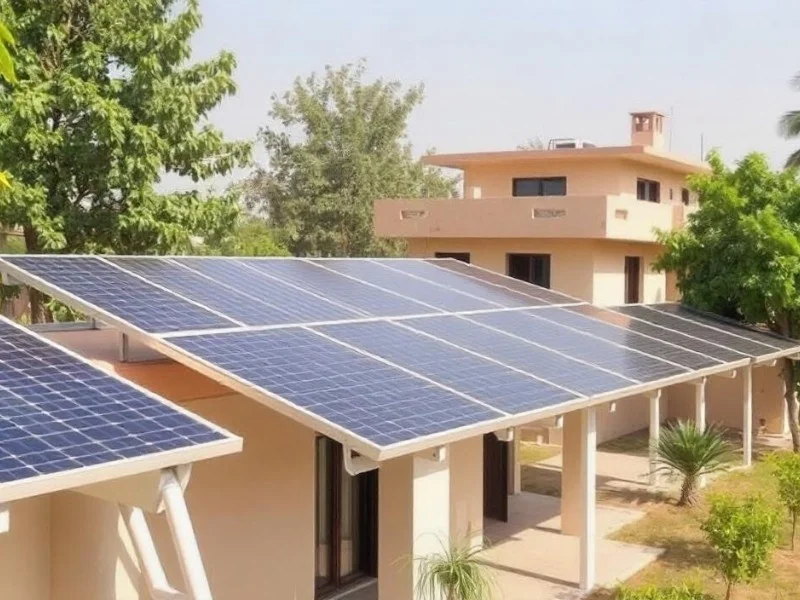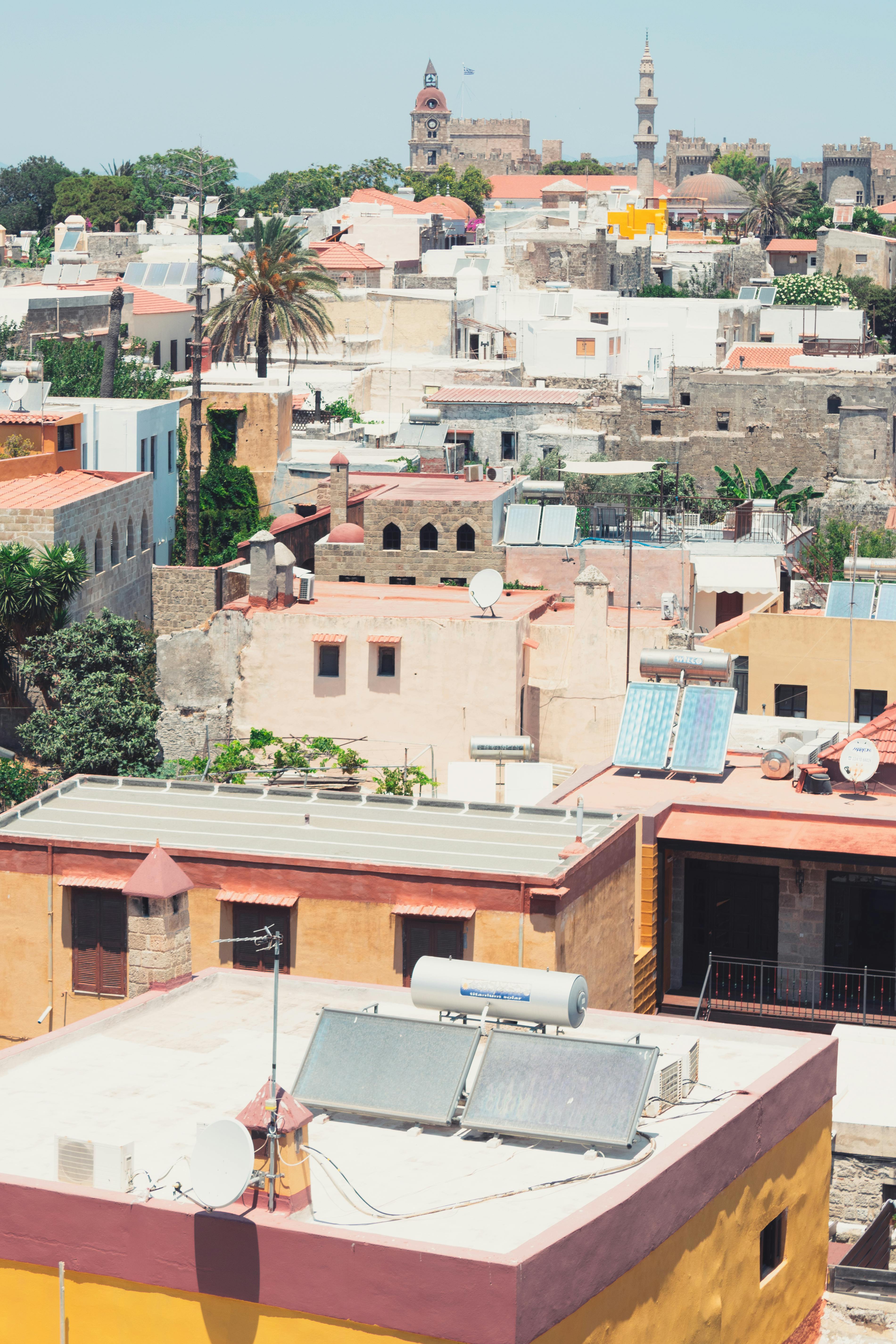India is a tropical country blessed with abundant sunlight. So much so that nearly bout 5,000 trillion kWh per year of energy is incident over India’s land that can be harnessed through solar. The National Institute of Solar Energy (NISE) has assessed the country’s solar potential of about 748 GW assuming 3% of the wasteland area to be covered by Solar panels.
Micro, small, and medium enterprises (MSME) & Residential societies and Households can also tap their rooftop solar potential which is currently pegged at around 200GW.
With so much potential, solar plants can not only add value to the existing assets but also help reduce electricity bills. While this may sound very straightforward and simple, designing a solar power plant design requires attention to some details
Solar panels work when sunlight strikes the solar panel (silicon cell) in the form of photons thus displaying electrons. Hence the solar panels need to receive sunlight at the right angle and under the right conditions to keep generating. In this blog, let us understand two big aspects of solar plant design that can greatly affect the efficiency and performance of the plant
- Tilt and Orientation
- Shadow Analysis
1. Orientation and Tilt
Orientation
As India lies in the northern hemisphere, it is recommended to install solar panels facing the true south. This will ensure that the sun is perpendicular to the solar panels at least for a few hours during noon. When solar panels are fixed facing south, they are essentially facing the sun all year long, allowing them to receive the most sunlight possible.

This ensures you get the maximum generation from solar panels throughout the year. But this doesn’t mean that solar panels can’t be oriented in any other direction, on sloped roofs, like those in factories, an east-west orientation works well too. The difference in energy output can be calculated using simulation software. It’s usually better to install the panels flush mounted following the roof's direction (east-west), because installing south-facing panels on an east-west roof would require extra structural support and it needs to be heavier to withstand wind loads.
As a general industry practice, it’s not recommended to install solar panels on north-facing roofs. However, if the roof’s tilt is less than 8 degrees, panels can still be installed, as the energy loss is much lower compared to steeper roofs with angles greater than 8 degrees.
Tilt
When we say tilt, it is the angle of the solar panel from the roof. The tilt is an important aspect because the angle at which the sunlight strikes the solar panels also determines the power output of the panel. While the position of the sun changes throughout the day as well as the year, it is not feasible to keep changing the position of the solar panels or install solar trackers in residential or commercial setups. Hence is always recommended to have a fixed solar panel with the optimum tilt in such cases.
What is your ideal tilt or angle for your solar plant?
Your building location’s latitude forms your ideal tilt. Every location has unique geographical coordinates which contain the latitude and longitude. For example, if you are installing a solar rooftop plant in Mumbai, then a tilt of 19 ° is ideal which will provide us with the optimum solar generation.
But one thing to remember is also the design and cost of structure involved while going with the tilt that is equal to the latitude. Higher the tilt, the structure will have to be designed stronger and better in order to withstand wind loads. Moreover, it also means that the capacity accommodated will be lesser with higher tilt angles due to shadow concerns.
A tilt angle of 10 degrees is usually preferred in India as it forms a good balance between generation output and the cost of solar structure.
It is also possible to estimate generation through solar simulation software with various tilt angles in order to find the optimum angle.
2. Shadow Analysis
There are many obstructions on roofs, in some cases it can be tanks, lift rooms, extended pillars, air vents, skylights, and chimneys, these elements can cast a shadow on the solar panels and, in some cases nearby buildings, trees can also cast a shadow on the solar panels.
As the nature of the sun, it rises in the east slowly moving towards the west throughout the day, as a result, the output from the solar panel also varies throughout the day as the sun moves.
Typically, hours between 9 a.m. –4 p.m. are crucial because, in most parts of India, this is the time when the sunlight is abundant. Most of the solar generation is recorded in these hours.
When an air vent or a chimney or a nearby building cast a shadow on the solar panels during these hours, then solar panels get affected by it and the generation drops as the sunlight doesn’t reach the solar panels. During the site assessment, the installer will review the site considering the height of each obstruction. The effect of shadows is analyzed through the solar simulation software and ensured that there are no major shadows, especially during the longest day i.e. 21st June, and the shortest day (21/22nd Dec) as it covers the possibility of the remaining days.
Now, in this case, it is not just one or two panels that will be affected by the shadow resulting in generation losses, it is an entire string (solar panels connected together in series) that is affected.
So even when the shadow is partially cast on 1-2 modules, the entire set of panels gets affected thereby reducing the generation to a large extent. If the shadow is not resolved, it may even cause hotspots in solar panels and may result in fire in some cases.
How do you avoid generation loss due to Shadows?
- If space constraint is not an issue, placing panels in shadow areas is a clear no-no. For an optimum solar plant design, you can try to place panels when the shadow is outside the 9-4 window.
- If a section is affected by shadow for a few hours of the day, ensure that all the panels in the shadow are connected to only 1 string, in this way the remaining plant remains unaffected.
- It is also important to understand some shadows for a few minutes in a day will still exist and that can be considered while calculating losses.
- While installing on an RCC roof, one needs to ensure sufficient space between solar panels so that the solar panels do not cast a shadow on the panels behind.
- In cases, where space is a huge constraint, the panels can be mounted with a smaller tilt angle of say 10 degrees this will lead to a smaller panel-to-panel distance without any major issues of shadow.
- One solution in RCC rooftops is to completely elevate the solar say 2-3 m from the roof, this allows to reduce the effect of shadows while allowing rooftop owners to use the shaded space below.
Optimizing a solar plant design involves actively considering orientation, tilt, and shadow analysis. These critical factors play a key role in determining the plant's capacity and its potential to maximize energy generation. By incorporating these considerations early on during the installation process, we can work towards achieving an optimal and efficient solar plant design.

.webp)
.webp)
.webp)


.jpg)







.jpg)





.jpeg)












.jpg)

.png)
.png)
.png)
.png)
.png)
.png)


.png)


.jpg)
